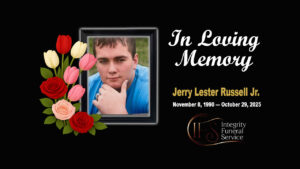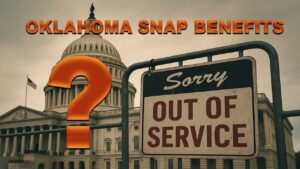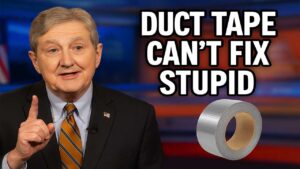Jimmy Kimmel Live Pulled Indefinitely: A Ratings Plunge, Political Firestorm, Or Free Speech Reckoning

Jimmy Kimmel Live Pulled Indefinitely: A Ratings Plunge, Political Firestorm, Or Free Speech Reckoning
In a move that’s sent shockwaves through Hollywood and ignited a fierce national debate on free speech, ABC has suspended Jimmy Kimmel Live! indefinitely. The decision, announced on September 17, 2025, comes just days after host Jimmy Kimmel’s blistering monologue on the assassination of conservative firebrand Charlie Kirk—a segment that conservatives decried as not just tasteless, but outright disrespectful and misleading. As the late-night staple sits in limbo, replaced by reruns and infomercials, the saga underscores a deeper malaise: the transformation of evening entertainment into partisan battlegrounds, compounded by a decade-plus of plummeting ratings.
With Kimmel’s show already hemorrhaging viewers, this controversy may mark the end of an era for one of television’s last comedic holdouts.
The suspension isn’t just a network headache; it’s a cultural flashpoint. Supporters rally around Kimmel as a victim of conservative censorship, while critics hail it as long-overdue accountability for a host who’s traded punchlines for podium-thumping. At its core, the uproar stems from Kimmel’s September 16 remarks on Kirk’s death, which painted the tragedy in starkly partisan strokes. But to understand why Jimmy Kimmel Live!—once a ratings juggernaut—finds itself on the chopping block, we must rewind through years of data revealing a show adrift in relevance, alienated by its own evolution into a megaphone for progressive activism.
The Fatal Shot Heard ‘Round the Airwaves: Charlie Kirk’s Assassination and Kimmel’s Response
Charlie Kirk, the 31-year-old founder of Turning Point USA, was gunned down on September 10, 2025, outside a rally in Orem, Utah. The assassin, identified as 28-year-old Tyler Robinson—a self-avowed leftist with ties to Antifa and a history of anti-conservative posts—was arrested hours later after a manhunt. Robinson reportedly shouted “This is for the revolution” as he fired, citing Kirk’s role in mobilizing young Republicans as motivation for the “senseless” act of political violence. Kirk’s death, the first high-profile assassination of a conservative activist in decades, plunged the nation into mourning on the right and finger-pointing on the left, with former President Donald Trump calling it “a dark day for America” during a European trip.
Enter Jimmy Kimmel. On the evening of September 16, with the nation still reeling, Kimmel opened his monologue by addressing the killing head-on. “Charlie Kirk was assassinated this week, and it’s senseless,” he began, his tone a mix of gravity and sarcasm that has become his signature. But the pivot came swiftly: Kimmel accused Trump’s MAGA allies of rushing to “exploit the killing” for political gain, suggesting they were already in the “fourth stage of grief: construction.” He quipped, “Demolition, construction. This is not how an adult grieves the murder of a colleague—it’s how you build a victimhood complex.” Worse, in a line that’s now infamous, Kimmel implied the shooter was “one of them,” winking at the audience as if to suggest Kirk’s own rhetoric had incited the violence from within conservative ranks.
The backlash was immediate and volcanic. Conservative commentators like Benny Johnson blasted Kimmel on X for “lying about Charlie Kirk’s assassination, blaming him for his own murder, and mocking him in death.” FCC Chair Brendan Carr, a Trump appointee, weighed in sharply, accusing Kimmel of “misleading the public” and launching a probe into ABC’s broadcast license, citing potential violations of decency standards. By September 17, ABC issued a terse statement: “Jimmy Kimmel Live! will be pre-empted indefinitely.” Insiders whisper that advertiser pullouts—fueled by the segment’s viral outrage—tipped the scales, with major sponsors like Procter & Gamble citing “brand misalignment.”
Kimmel has remained mum, but allies in Hollywood have circled the wagons. Jay Leno, the elder statesman of late-night, told reporters, “I’m on Jimmy’s side. You don’t get canceled saying popular things. Usually, it’s the truth that winds up getting canceled.” Yet the “truth” Kimmel peddled—that the assassin was a MAGA insider—crumbled under scrutiny. Robinson’s manifesto, released post-arrest, railed against “fascist enablers” like Kirk, with no ties to the right. Critics argue Kimmel’s comments weren’t just wrong; they were a grotesque trivialization of a young father’s death, turning tragedy into tribal fodder.
This isn’t isolated. The week following Kirk’s killing saw a spasm of related violence: a bomb threat at RFK Jr.’s home, vandalism of Kirk memorials, and—eerily—a drive-by shooting at an ABC affiliate in Sacramento by a 64-year-old anti-Trump activist, Anibal Hernandez-Santana, who had posted wishes for the former president’s “physical demise.” Hernandez-Santana, a former teachers’ union official with leftist leanings, faces felony charges, but the incident amplified calls for media restraint. As one X user summed it up: “While ethnic cleansing rages in Gaza, America fixates on Kimmel objecting to Kirk’s assassination—what a contrast.”
A Slow Bleed: The Ratings Data That Doomed Jimmy Kimmel Live!
Long before Kirk’s bullet, Jimmy Kimmel Live! was bleeding out. Nielsen data paints a grim portrait of decline, mirroring the late-night genre’s broader implosion but exacerbated by Kimmel’s pivot from apolitical hijinks to full-throated advocacy. Launched in 2003 as a scrappy underdog, the show hit its zenith in 2015 with 2.4 million total viewers per episode and nearly 980,000 in the prized 18-49 demographic—a demo that advertisers crave for its spending power.
Fast-forward to 2025: Average viewership has cratered to 1.6 million total, a 33% nosedive, while the 18-49 crowd has evaporated to just 261,000—a staggering 73% drop. Quarterly breakdowns reveal the slide’s acceleration: Q1 2025 averaged 1.82 million total and 178,000 in the demo, dipping to a summer nadir of 1.10 million and 129,000 by September. Even specials, like Kimmel’s post-Oscars broadcasts, which once spiked to 3-4 million, now struggle to break 2 million amid cord-cutting and streaming wars.
| Year | Total Viewers (Millions, Avg.) | 18-49 Viewers (Thousands, Avg.) | Key Trend |
|---|---|---|---|
| 2015 | 2.4 | 980 | Peak post-Colbert era; brief demo lead. |
| 2018 | 2.0 | 600 | Post-election politics boost fades. |
| 2021 | 1.85 | 400 | Pandemic recovery stalls. |
| 2023 | 1.81 | 251 | Stable lows; Oscar spikes. |
| 2025 (YTD) | 1.60 | 261 | -10% YoY total; summer -43% from Jan. |
The numbers don’t lie: Kimmel trails competitors like Stephen Colbert’s Late Show (2.57 million total in 2024) and, more humiliatingly, Fox’s Gutfeld! (3.2 million total, 381,000 demo in 2025)—a show that revels in anti-woke satire without the sanctimony. Ad revenue tells the tale too: Down 14% year-over-year to $46 million in 2024, with the show reportedly hemorrhaging $10-20 million annually for Disney.
Why the freefall? Industry analysts point to fragmentation—YouTube and TikTok siphoning young viewers—but Kimmel’s own evolution bears much blame. A 2018 Center for Media and Public Affairs study found 88% of his political jokes targeted conservatives, with monologues ballooning from 20% political content in 2013 to 60% by 2017-18. Milestones like his 2017 healthcare plea (tied to his son’s illness) and gun control rants post-Parkland humanized him for liberals but repelled the center. A 2021 YouGov poll captured the alienation: 54% of viewers deemed late-night “too political,” with independents and conservatives—key to the lost demo—fleeing en masse.
Kimmel defended the shift in a 2018 Hollywood Reporter interview: “We’re in a time where silence is complicity.” Viral clips, like his healthcare segment (10 million YouTube views), prove he resonates online. But linear TV’s older, escapist audience tunes out the lectures. As one Reddit thread from 2023 lamented: “Kimmel went from ‘Mean Tweets’ to mean streets—give us laughs, not MSNBC at 11:35.”
From Water Cooler Wit to Partisan Pulpit: Late-Night’s Reckoning
Kimmel isn’t alone in this metamorphosis. Post-2016 Trump election, late-night hosts—Colbert, Fallon, Meyers—leaned left, their monologues morphing into mini-rallies. Colbert’s Late Show retains a demo edge (281,000 in 2024) thanks to edgier writing, but even he’s down 70% since 2015. Fallon, the “safe” option, avoids politics yet lost 70% of his young viewers to TikTok. The outlier? Greg Gutfeld, whose populist barbs draw 107% more total viewers than Kimmel, proving audiences crave pushback, not preachiness.
This politicization correlates with the industry’s death spiral: Late-night viewership is down 50-70% since 2013, per Forbes. Cord-cutting explains much, but surveys link the exodus to fatigue with “punditry over entertainment.” X posts echo this: “JKL was fun until Kimmel became a blue-check activist,” one user griped in August 2025, amid a 43% monthly ratings dip.
For ABC, the Kirk fiasco is the final straw. Disney, facing shareholder pressure amid a streaming pivot, can’t afford a money-loser that’s now toxic. Insiders say the suspension was “pre-emptive”—a way to dodge FCC fines and boycotts while gauging public reaction.
Free Speech or Fair Play? The Battle Lines Draw
At Thursday’s heart is free speech. Liberals decry it as Trump-era censorship: Rep. Yassamin Ansari (D-AZ) introduced a resolution condemning “dictator tactics,” arguing ABC buckled to FCC threats. NPR’s coverage framed it as “questions about free speech and censorship,” noting Carr’s probe echoes past right-wing pressures on media. Hollywood heavyweights like Leno and Rosie O’Donnell rallied online: “This is McCarthyism 2.0,” O’Donnell tweeted.
Conservatives counter that it’s accountability, not suppression. “Kimmel mocked a murder victim and lied about the killer—free speech doesn’t mean consequence-free,” Johnson argued. The Sacramento shooting, linked tenuously to Kimmel outrage, amplified fears of escalation: Hernandez-Santana’s anti-Trump posts suggest a leftist powder keg, with 58 House Democrats voting against disavowing political violence last week.
PBS’s explainer nailed the tension: “An unprecedented move that followed backlash over the comic’s remarks.” Yet precedents abound—Roseanne Barr’s 2018 firing (18 million viewers) and Bill Maher’s 2001 ouster (3.7 million)—neither got second chances. Kimmel’s 1.7 million average pales; as one X post quipped, “Ratings killed it before the jokes did.”
Twilight for Late-Night? Kimmel’s Legacy and the Road Ahead
As Jimmy Kimmel Live! idles—its studio dark, bandstand silent—the questions mount. Will ABC relent, perhaps with an apology tour? Or is this the curtain call for a format born in Johnny Carson’s heyday, now gasping in the algorithm age? Kimmel, 57 and Oscar-hosting vet, could pivot to podcasts or specials; his viral savvy endures. But the show? Analysts predict a soft landing: Reboots with fresher faces, or outright cancellation by 2026.
Kirk’s death, meanwhile, galvanizes the right: Memorials swell, Turning Point surges in donations. It exposes America’s fractures—where jokes kill careers, and words incite shots. As Leno said, truth gets canceled. In Kimmel’s case, so might an empire built on it.
For late-night, the lesson is stark: Entertain, don’t evangelize. In a polarized 2025, audiences crave escape, not echoes. As viewership data screams and free speech flames flicker, one thing’s clear: Jimmy Kimmel’s indefinite hold may be television’s way of saying, “Enough.”





